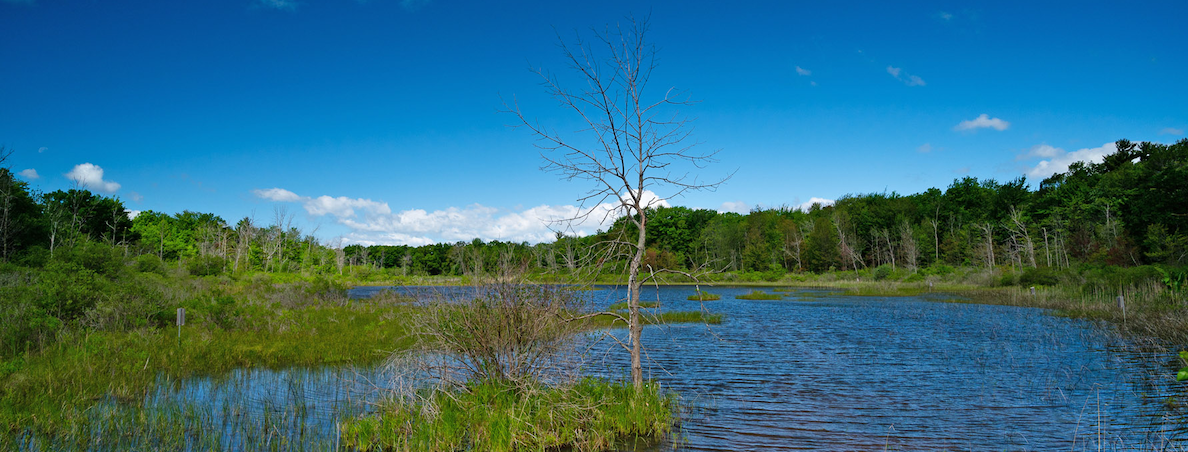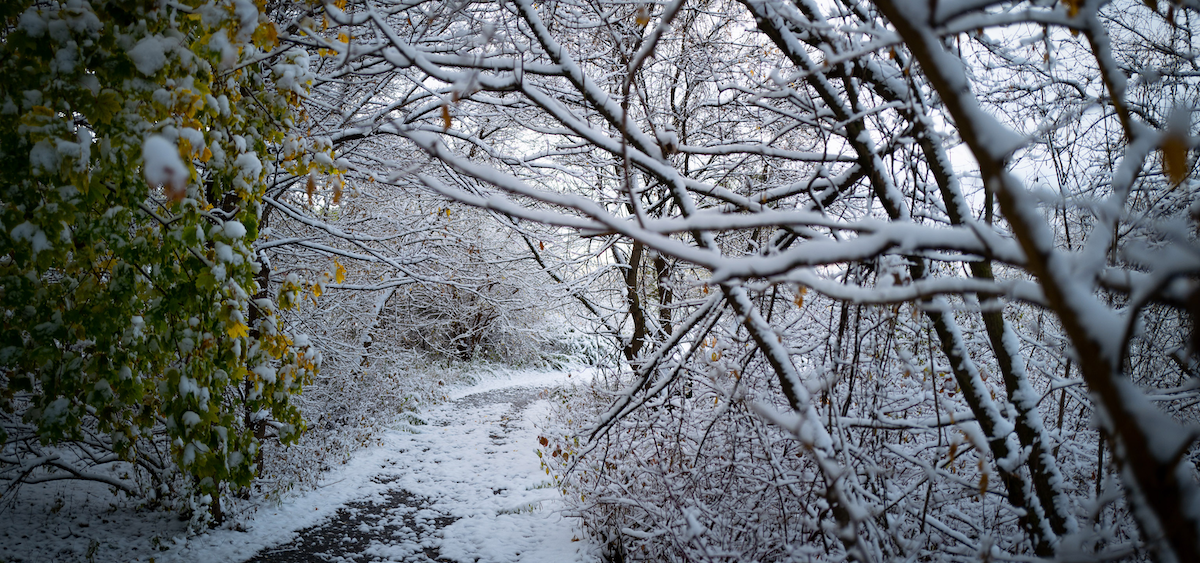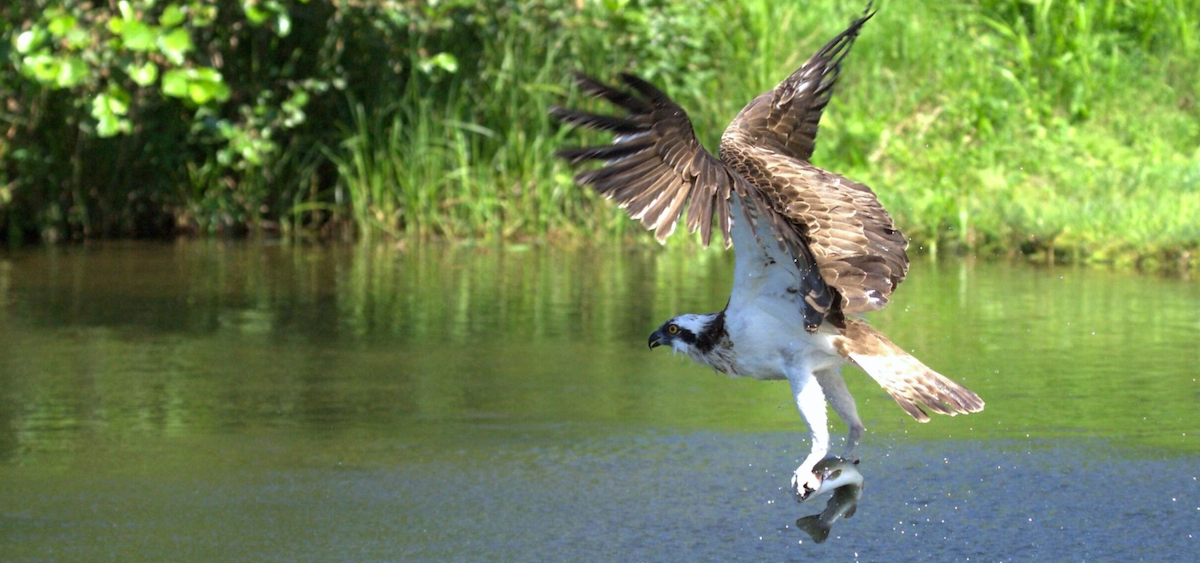How Greater Lakes Promise is leveraging land conservation efforts to benefit water quality in the Great Lakes region

Across the Great Lakes region, a new and innovative partnership of land trusts and nonprofits is restoring select farmland to improve water quality. This regional network, Greater Lakes Promise, combines scientific modeling and local land trusts’ expertise to target those agricultural parcels that disproportionally impact water quality. They will restore these parcels to native perennial vegetation to reduce nutrient runoff and improve the health of our waterways. The team will also establish a permanent funding stream to sustain this work over the long term, ensuring ongoing ecological improvement to our land and water.
The team includes Freshwater, The Stewardship Network, and the following land conservancies in the Maumee, St. Louis, and Saginaw River watersheds: Minnesota Land Trust, Wisconsin Landmark Conservancy, Little Forks Conservancy, Black Swamp Conservancy and Saginaw Basin Land Conservancy.
We spoke to Carrie Jennings, project lead for the Greater Lakes Promise and research & policy director at Freshwater, a water nonprofit, and Zachary Branigan, executive director of the Saginaw Basin Land Conservancy, to learn more about the project’s origin and future.
Q: Thank you both for joining us. Let’s start at the core of Greater Lakes Promise. How did this project get started?
Carrie: It started with a friend of mine, who is a Christmas tree farmer and also raises prairie seed. He was selling food at a Christmas market and would charge an extra 50 cents for a brat to restore the prairie around his neighbor’s pond, thus improving the pond’s water quality. His idea was that people in that area valued the prairie, the butterflies, the birds and animals—and also the improved water quality. He not only sold a lot more brats, but he also had people donating money separately because they cared about the cause. This little experiment showed that local awareness and involvement can make a big difference in connecting long-term conservation plans directly with those who love the land.
We wanted to build upon this concept by creating a regional strategy to support local land conservation efforts. We pitched the idea [behind the Greater Lakes Promise] to the Great Lakes Protection Fund, and during its pilot year, I recruited several local land trust and conservancy organizations, like Zachary’s. Land trusts already have extensive knowledge and systems in place to protect land. We knew that if we could support the land trusts in their work and help connect the dots between their conservation efforts and water quality improvement, then the dual messages would benefit everyone across the region.
Q: What makes this approach from Greater Lakes Promise different from other water quality initiatives?
Carrie: We’re interested in building a network of land trusts working together to improve water quality by protecting the lands that we all care about, those lands that are in the watersheds that lead to the Great Lakes.
We think that everyone values the natural beauty of these near-shore areas that lead to the Great Lakes. So, we’re helping build the relationships between these land trusts so that they can continue to learn from each other, creating a large network of like-minded conservation organizations with different approaches. That will benefit the whole region in water quality and land conservation efforts.

Q: Zachary, the Saginaw Basin Land Conservancy is one of the organizations involved with Greater Lakes Promise. Tell us more about land conservation and the work that you are doing.
Zachary: We were founded about 30 years ago, primarily on the idea of wetland conservation. Permanent land conservation has always been a primary focus for us as a land trust. However, over the last decade or so, our organization has evolved into a more fully realized conservation nonprofit. While permanent land protection remains a foundational part of our work, we’ve branched out to include a wide variety of stewardship efforts like habitat maintenance and restoration, blight remediation, and more. Many communities in our watershed have been impacted by water quality issues that can be corrected by the conservation and restoration services we provide. We’re involved because it’s all related.
All of those things conspire to create better conditions in the local watershed. Everything that we do on land has an impact on water, so the more land that’s in permanent conservation, the better for our waterways.
Q: How does working with an organization like Freshwater help your mission?
Zachary: The one thing that we were not particularly well-versed in was how to determine which project has a better water quality outcome. Freshwater has provided us with information from modeling that has been very helpful in conceptualizing our work, and we’ve found local partners here who are more scientifically focused.
It’s all a learning process for us, but I can say with confidence that we’re focusing our permanent land protection efforts specifically on projects that we believe will address an acute problem related to water quality. We’re a small organization, so anytime that we can try to absorb knowledge from others, it’s going to be huge.

Q: Water quality is something that can take a while to change. What are some of the short- and long- term visions of Greater Lakes Promise?
Carrie: That’s where the protection on the land becomes especially important, because that’s the visible part of the equation. People will see lands restored to perennial vegetation, and vacant lots with pollinator-friendly plants and actually see the impact. The measure of success will be acres restored, the impact on land, and the return of species, which will lead to improvement in the rivers and the watersheds.
Q: What is a key takeaway you want consumers, donors, funders—people of the Great Lakes region—to know about Greater Lakes Promise?
Zachary: By focusing on protecting and restoring the most valuable natural properties in our watershed, we are making incremental gains in the overall water quality in the watershed. With that comes a myriad of benefits, including wildlife habitat, outdoor recreation, open space, beauty, clean air, plants, water, and trees.
Carrie: That’s how we ended up with our tagline: “Clean Water from Healthy Lands.” We have to have a combination of science and heart to make progress.
To learn more about the Greater Lakes Promise and how your support benefits the regional watersheds, please visit www.greaterlakespromise.org.
For more information on what we do at Great Lakes Protection Fund, see our impact page.